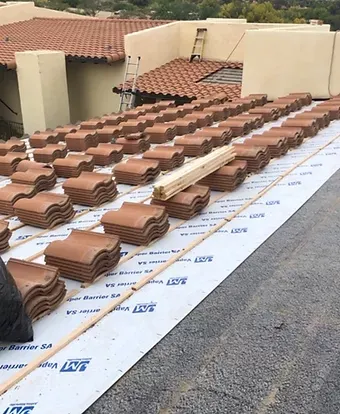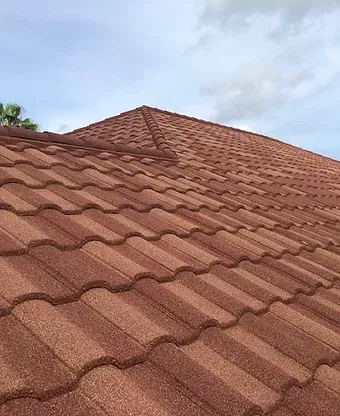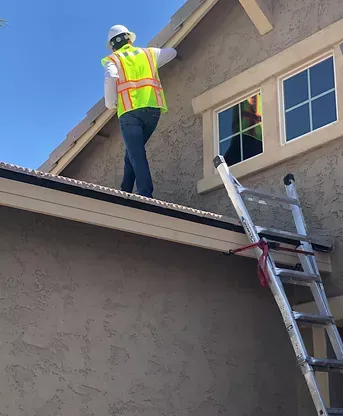TPO vs. PVC vs. EPDM: Choosing the Best Flat Roof for Your Southwest Florida Business
TPO vs. PVC vs. EPDM: Choosing the Best Flat Roof for Your Southwest Florida Business
Understanding Flat Roofing Options for Southwest Florida
When it comes to commercial roofing in Southwest Florida , TPO, PVC, and EPDM are the three most common flat roofing materials. These options are widely used because they offer distinct advantages suited to the unique demands of this region. Business owners often weigh their choices based on factors like cost, durability, and energy efficiency, all while considering the local climate’s impact.
The hot, humid, and storm-prone environment of Southwest Florida makes selecting the right roof critical. High UV exposure, heavy rainfall, and hurricane risks require a roofing material that can withstand these challenges without compromising performance. This is why membrane roofs like TPO, PVC, and EPDM have become go-to solutions for businesses aiming to balance functionality with longevity. Now, let’s explore what each material brings to the table.
What is TPO Roofing?
TPO, or Thermoplastic Olefin, is a popular choice for flat roofs due to its impressive combination of features. Made from a blend of polypropylene and ethylene-propylene rubber, TPO membranes are designed to reflect sunlight and resist heat buildup. This reflective quality makes TPO an excellent option for reducing cooling costs , which is especially important in Florida’s scorching climate.
Another key benefit of TPO is its resistance to UV rays, ozone, and chemicals, ensuring long-term performance even under harsh conditions. Its durability and energy efficiency make it a favorite among business owners who want a cost-effective solution without sacrificing quality. With these advantages in mind, it’s no wonder TPO has gained traction in Southwest Florida and beyond.
What is PVC Roofing?
PVC, or Polyvinyl Chloride, is another highly durable option for flat roofs. Composed of vinyl and plastic polymers, PVC roofing is known for its exceptional strength and flexibility. It resists punctures and tears, making it ideal for areas prone to severe weather, such as Southwest Florida. Additionally, PVC roofs are naturally fire-resistant, adding an extra layer of safety for commercial properties.
PVC also excels in energy efficiency, thanks to its reflective surface that helps lower cooling costs in sunny climates. Its resistance to chemicals and high temperatures further enhances its appeal, particularly for businesses exposed to industrial pollutants or coastal salt air. For these reasons, PVC remains a top contender for businesses seeking a reliable and long-lasting roofing solution.
What is EPDM Roofing?
EPDM, short for Ethylene Propylene Diene Monomer, is a synthetic rubber roofing membrane known for its flexibility and durability. This material is highly resistant to weathering, including extreme temperatures and UV exposure, making it a solid choice for many commercial applications. EPDM is also recyclable and relatively easy to install, which can reduce labor costs during the installation process.
However, one downside of EPDM is its lower energy efficiency compared to TPO and PVC. Its darker color absorbs more heat, potentially increasing cooling expenses in hot climates. Despite this limitation, EPDM remains a viable option for businesses looking for a budget-friendly and dependable roofing material. Understanding its strengths and weaknesses is key to determining if it’s the right fit for your needs.
Climate Considerations: Why Southwest Florida Matters
Southwest Florida presents unique challenges for flat roofs, including intense UV exposure, high heat, humidity, and frequent storms. These factors can significantly affect the performance and lifespan of roofing materials. For example, prolonged sun exposure can cause some membranes to degrade faster, while heavy rains may lead to ponding issues if the roof isn’t properly sloped.
Hurricane risks add another layer of complexity, as roofs must meet strict wind uplift requirements to withstand tropical storms. Salt air from coastal areas can also corrode certain materials over time. Each roofing type—TPO, PVC, and EPDM—handles these challenges differently, making it essential to choose a material that aligns with both local building codes and your business’s specific needs.
Comparing Durability and Lifespan
When evaluating the durability of TPO, PVC, and EPDM, it’s important to consider their average lifespans and how well they hold up under stress. TPO typically lasts 15-20 years, though proper maintenance can extend its life. It’s resistant to punctures and chemical damage but may experience seam separation over time if not installed correctly.
PVC roofs generally outlast TPO, with lifespans ranging from 20-30 years. Their superior seam integrity and resistance to fire, chemicals, and UV rays make them a durable choice for demanding environments. EPDM, on the other hand, can last 20-25 years and is highly resistant to weathering and shrinkage, though it may be more prone to physical damage compared to TPO and PVC.
Maintenance plays a crucial role in maximizing the lifespan of any roof. Regular inspections and timely repairs can prevent minor issues from escalating into costly problems. By understanding the strengths and weaknesses of each material, you can make an informed decision about which roof will best serve your business for years to come.
Installation, Cost, and Insurance
The installation process varies for TPO, PVC, and EPDM, impacting both cost and speed. TPO is relatively easy to install, often resulting in lower labor costs. PVC requires skilled professionals due to its welding techniques, which can increase upfront expenses. EPDM’s simpler installation process makes it a budget-friendly option, though improper sealing of seams can lead to leaks.
Cost considerations extend beyond installation to long-term value. While TPO and PVC may have higher initial costs, their energy efficiency and durability often result in savings over time. Insurance companies in Southwest Florida sometimes offer incentives for using wind-resistant materials, further offsetting expenses. Understanding these nuances ensures you get the best return on investment.
Misconceptions about pricing abound, with some assuming cheaper materials equate to better value. However, factoring in maintenance, longevity, and potential insurance benefits paints a clearer picture. Working with a qualified contractor who understands regional requirements can help you navigate these complexities and find the most cost-effective solution for your business.
Energy Efficiency and Environmental Impact
TPO and PVC stand out for their energy-efficient properties, particularly in hot climates like Southwest Florida. Both materials feature reflective surfaces that bounce sunlight away, reducing heat absorption and lowering cooling costs. This not only benefits your wallet but also contributes to environmental sustainability by decreasing energy consumption.
In terms of eco-friendliness, all three materials are recyclable to varying degrees. PVC and TPO are often praised for their minimal environmental impact during production and disposal. Additionally, incorporating green roof elements —like vegetation or solar panels—can enhance sustainability further. By choosing a roof that prioritizes energy efficiency and environmental responsibility, you’re investing in both your business and the planet.
Common Problems and Maintenance Needs
Each roofing type comes with its own set of potential issues. TPO roofs may experience seam failures if not welded properly, while PVC’s susceptibility to oil-based substances can cause membrane degradation. EPDM, although durable, can suffer from shrinkage and seam separation over time. Ponding water is another common problem across all materials, leading to structural damage if left unaddressed.
Regular maintenance is key to preventing these issues and extending the life of your roof. Inspections should occur at least twice a year, focusing on seams, flashings, and drainage systems. Addressing small problems early can save significant money and hassle down the line. With proper care, your roof can provide reliable protection for decades.
Warranty, Code Compliance, and Insurance Requirements
Warranties vary widely depending on the manufacturer and roofing type. TPO and PVC often come with longer warranties than EPDM, reflecting their superior durability. However, warranty terms can differ, so it’s crucial to read the fine print and understand what’s covered.
Local building codes in Southwest Florida mandate specific standards for wind uplift, fire resistance, and UV protection. Ensuring compliance not only keeps your business safe but also affects insurance premiums. Some insurers offer discounts for using approved materials, making it worthwhile to explore all available options before making a decision.
Commercial Application and Aesthetics
Different businesses benefit from different roofing types. Retail spaces might prioritize aesthetics, opting for TPO or PVC’s clean, modern look, while industrial facilities may lean toward EPDM’s practicality. Reflectivity and color play a role in branding and curb appeal, especially for customer-facing businesses.
LEED certification and other green building initiatives also influence roofing decisions. Materials that contribute to energy efficiency and sustainability can earn points toward these certifications. Whether you’re focused on visual appeal or environmental impact, there’s a roofing solution tailored to your business’s unique needs.
Choosing the Right Contractor: What to Look For
Selecting the right contractor is just as important as choosing the right roof. Look for professionals with extensive experience in Florida’s commercial roofing market, including familiarity with local codes and manufacturer partnerships. Certifications from reputable organizations ensure expertise and adherence to industry standards.
Vetting contractors involves checking references, reviewing past projects, and confirming licensing and insurance. A trustworthy contractor will provide transparent communication, detailed estimates, and a commitment to quality workmanship. Partnering with the right team ensures your roof is installed correctly and performs optimally for years to come.
FAQs: TPO vs. PVC vs. EPDM for Southwest Florida Businesses
-
Which flat roof type lasts longest in Florida’s climate?
PVC roofs generally last the longest, with lifespans of 20-30 years. Their superior resistance to UV rays, chemicals, and physical damage makes them ideal for Florida’s challenging environment.
-
Do TPO, PVC, or EPDM roofs qualify for energy efficiency credits?
Yes, TPO and PVC roofs often qualify for energy efficiency credits due to their reflective surfaces, which help reduce cooling costs. Check with local utility providers or government programs for eligibility details.
-
How do hurricanes and tropical storms affect membrane roofs?
High winds can test a roof’s seam strength and wind load ratings. PVC and TPO perform well in hurricanes due to their strong seams and wind resistance, while EPDM may require additional reinforcement.
-
Are EPDM roofs suitable for high-sun, coastal locations?
EPDM roofs can work in sunny, coastal areas but may benefit from coatings to improve UV resistance. Their durability makes them a viable option, though energy efficiency lags behind TPO and PVC.
-
What’s the biggest cost difference between TPO, PVC, and EPDM?
PVC tends to have the highest upfront cost, followed by TPO, with EPDM being the most affordable. However, long-term savings from energy efficiency and durability often favor TPO and PVC.
Conclusion: Finding the Best Flat Roof Solution for Your Southwest Florida Business
Choosing between TPO, PVC, and EPDM involves weighing multiple factors, including climate response, longevity, energy performance, and cost-benefit analysis. Each material offers unique advantages tailored to different business needs and environmental conditions. Carefully evaluating these aspects ensures you select a roof that provides optimal protection and value.
To make the best decision for your business, consider scheduling a professional roof assessment or consultation. An expert can analyze your property’s specific requirements and recommend the ideal membrane solution. With the right choice, you’ll enjoy long-term efficiency, durability, and peace of mind knowing your roof is built to withstand Southwest Florida’s demanding climate.




